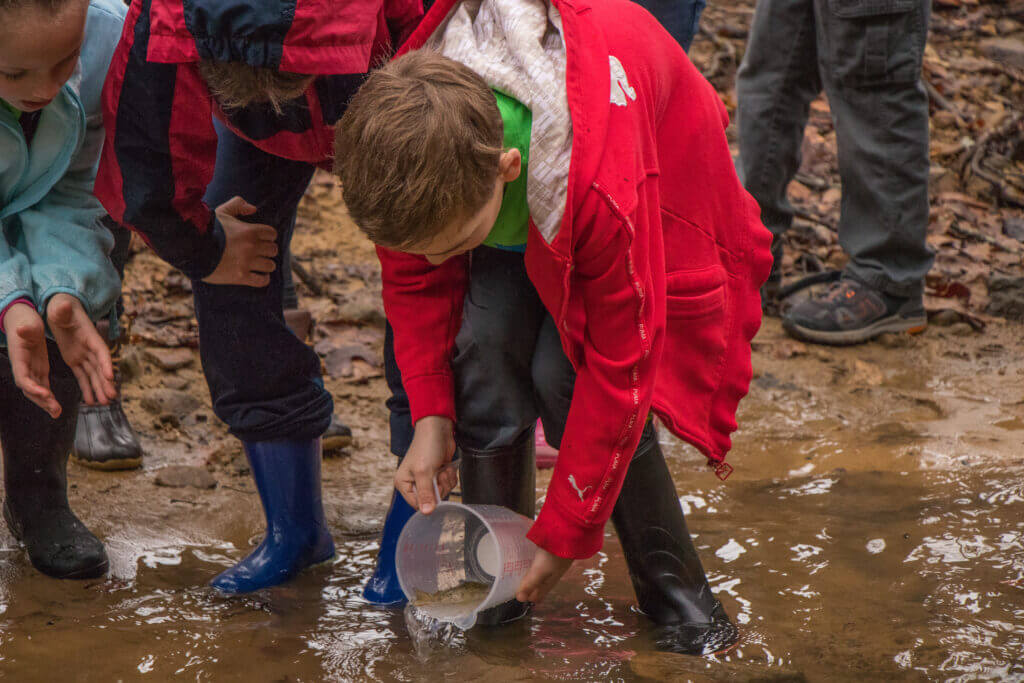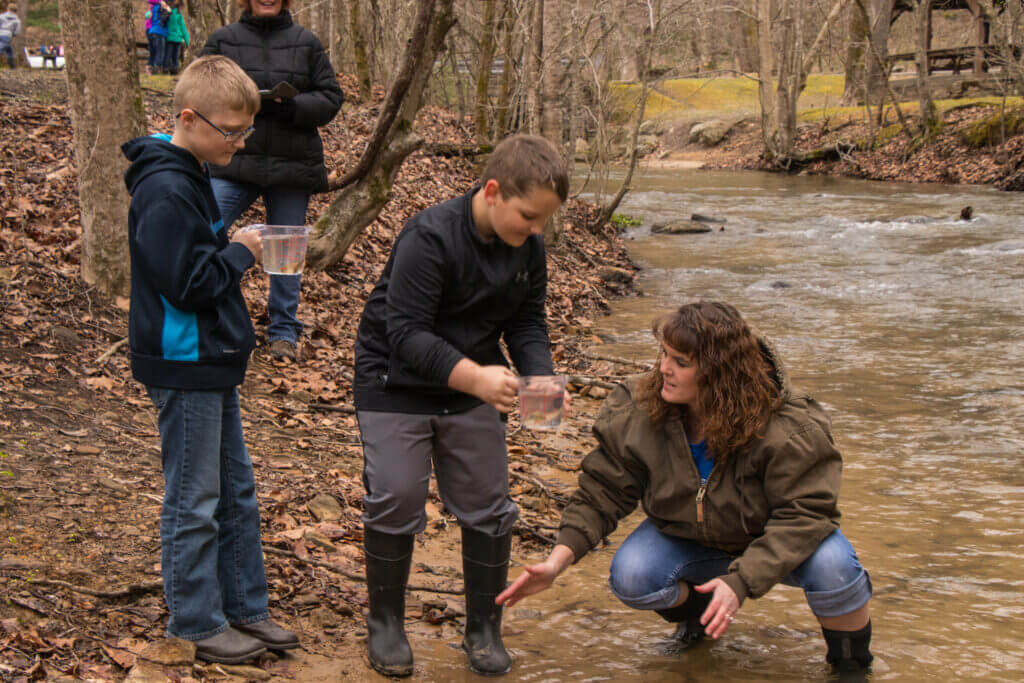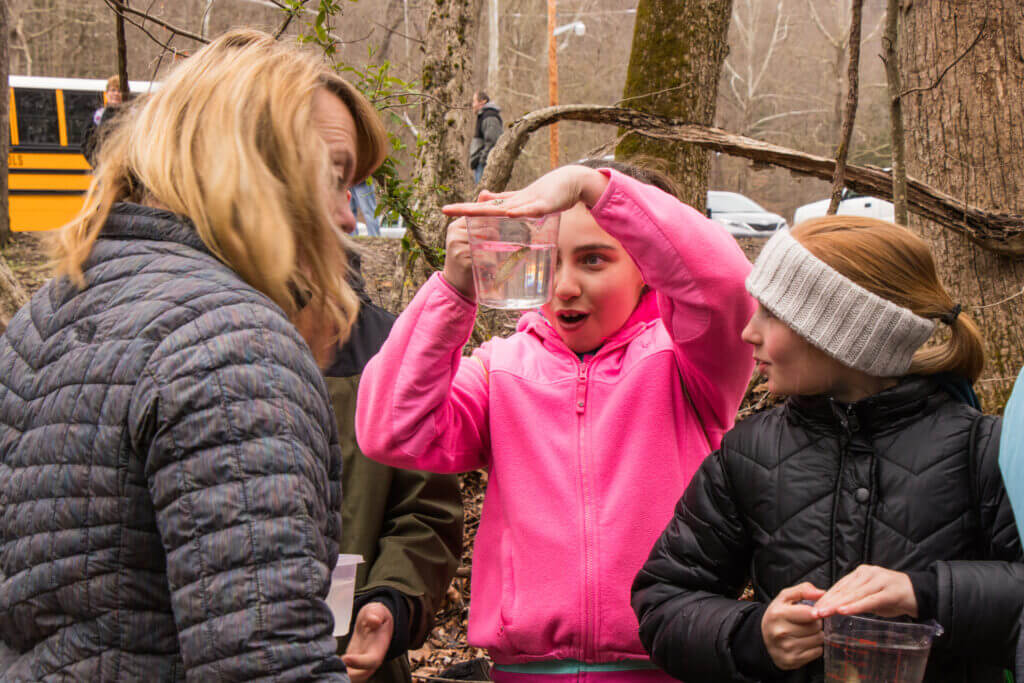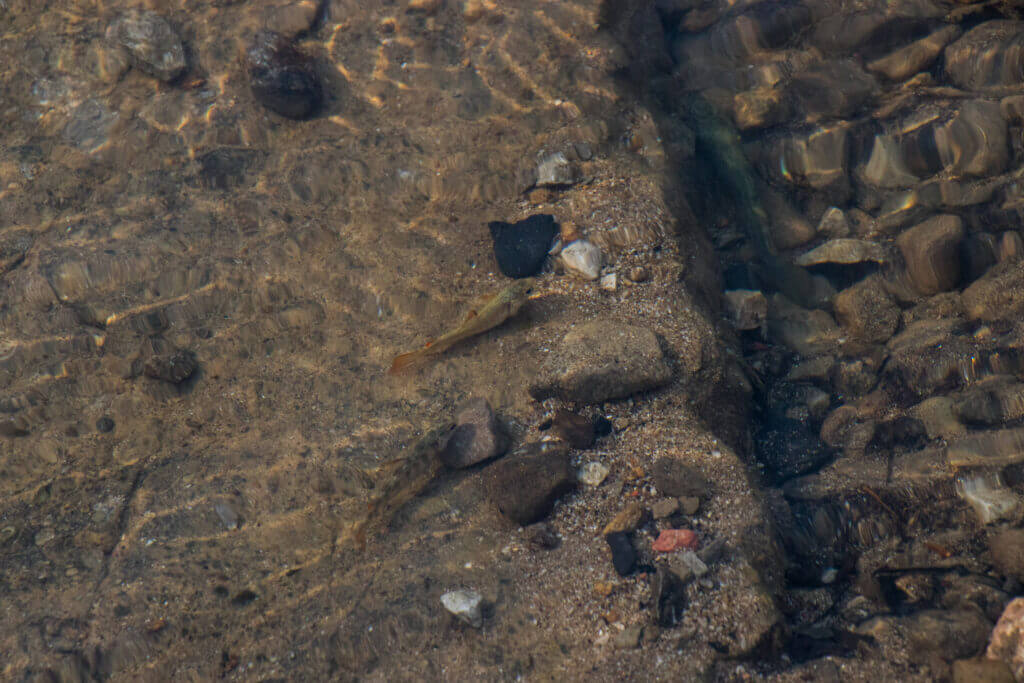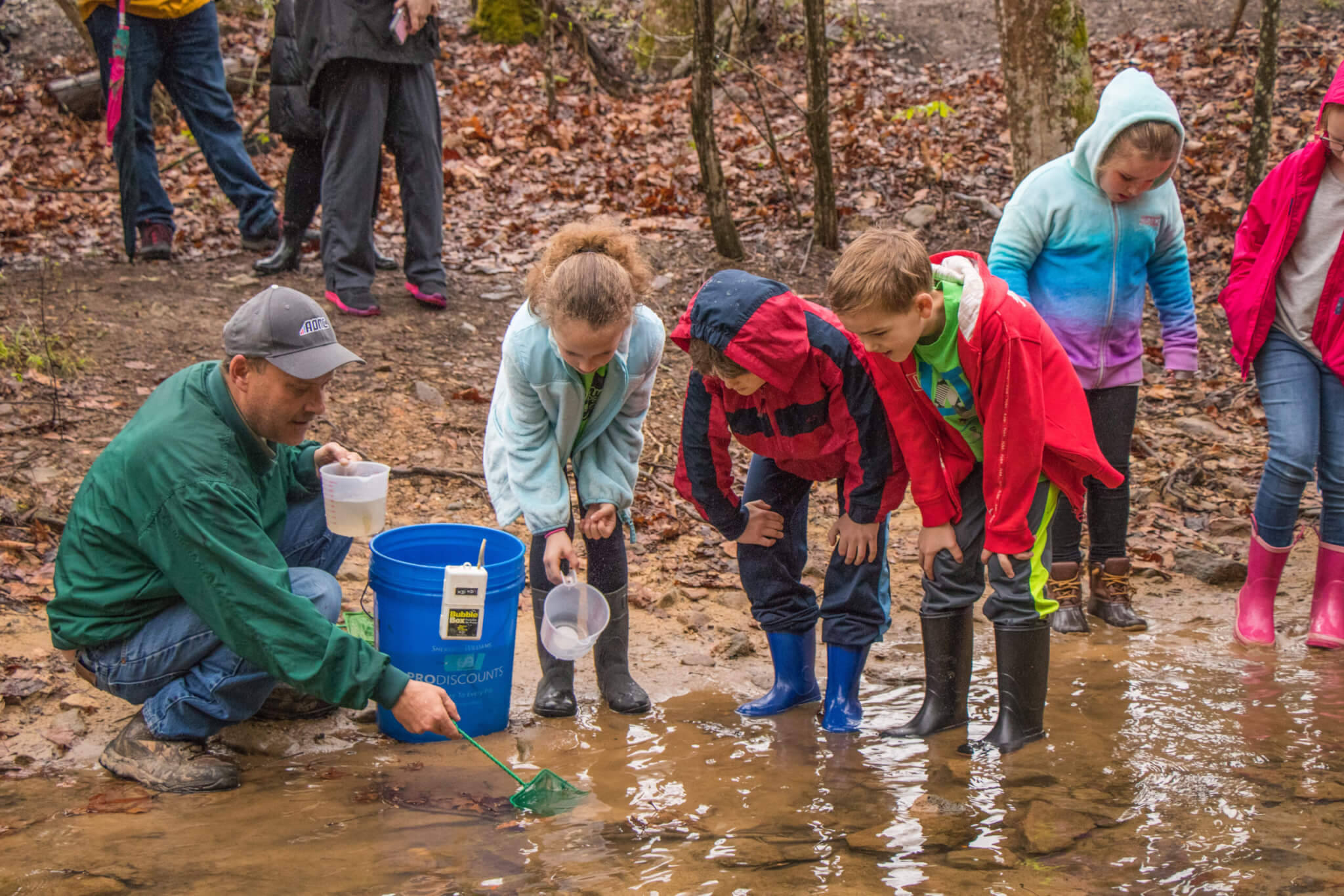
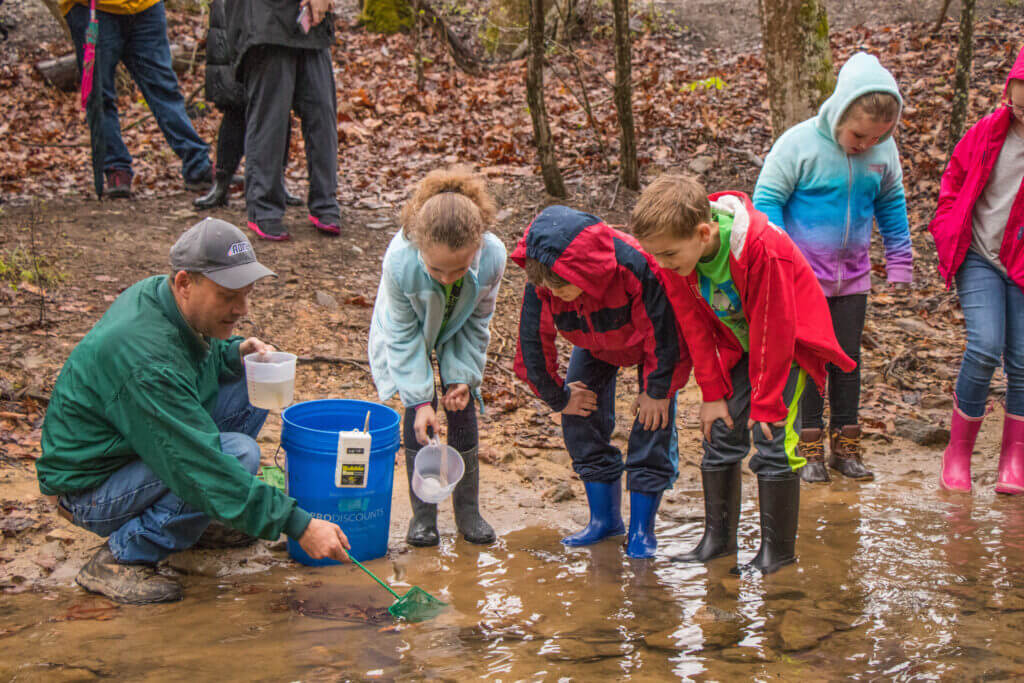
Trout Unlimited‘s Trout in the Classroom program gives students a closer connection with their environment.
This story was originally published in the March 2019 issue of Wonderful West Virginia. To subscribe, visit wonderfulwv.com.
written by Wendy Holdren
Some teachers use Trout in the Classroom—a national Trout Unlimited program where students get to raise fish for later release into waterways—as a hands-on science lesson. Others use the program for object lessons to help students develop their math or writing skills. But when Holly Lampl brought the program into her kindergarten classroom at Alban Elementary in Kanawha County, she had a larger purpose in mind.
When Lampl first joined the program about five years ago, some of her coworkers were skeptical. They didn’t see how Trout in the Classroom would be beneficial for 5- and 6-year-olds. But Lampl has structured her lessons in a way that helps youngsters understand the impact humans can have on the environment.
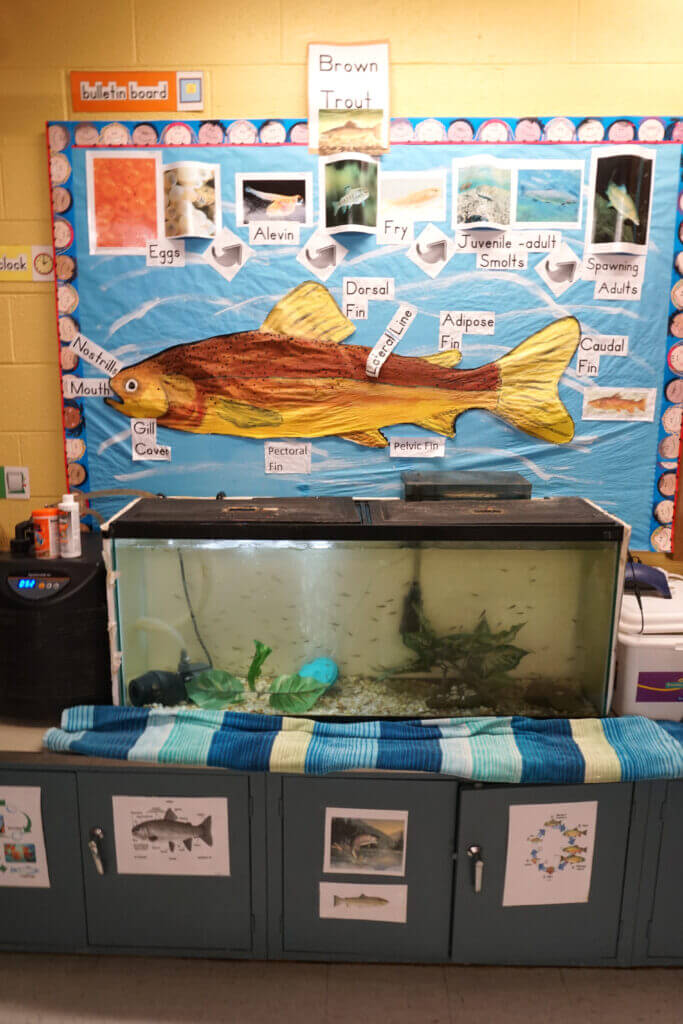
photographed by Zack Harold
She has a go-to demonstration to illustrate the importance of water quality. She separates her class into teams of pollutants—some are sand and rocks while others are dead fish chemicals—and gives each team a marker. Natural pollutants get different washable markers but the chemical team receives a permanent marker. She then lines the teams up single-file and hands the first student in each line a paper water droplet. At “ready, set, go,” the students race to pass their droplets to the back of their line, with each student making a mark on the droplet as it goes by. Once all the droplets have reached the end of the line, Lampl collects them and places them under her projector. She’s the stand-in for the water company in this demonstration. Using a bottle of cleaner, she easily wipes the natural pollutants off the water droplets. But no matter how much she scrubs, the permanent marker—the chemicals—won’t come clean.
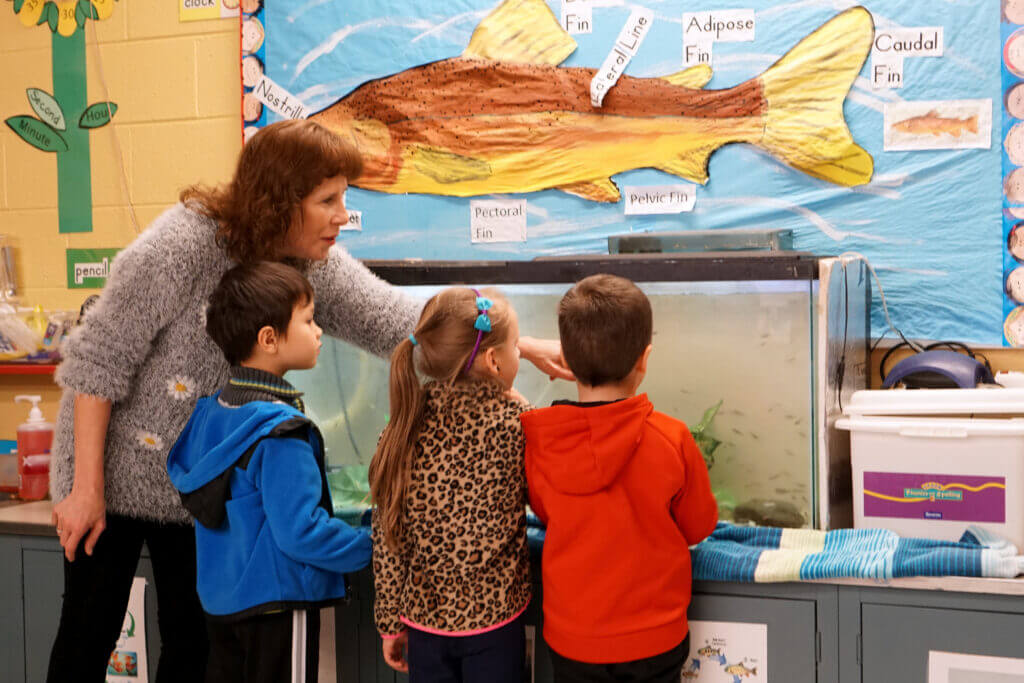
photographed by Zack Harold
Lampl then explains to her students that, while humans can find other sources of drinking water if one becomes unusable, fish are stuck in one habitat. “Fish can’t say, ‘I’m not going to use the river today.’ They can’t walk across the land to go to another stream,” Lampl says. And her students, young as they are, understand this concept.
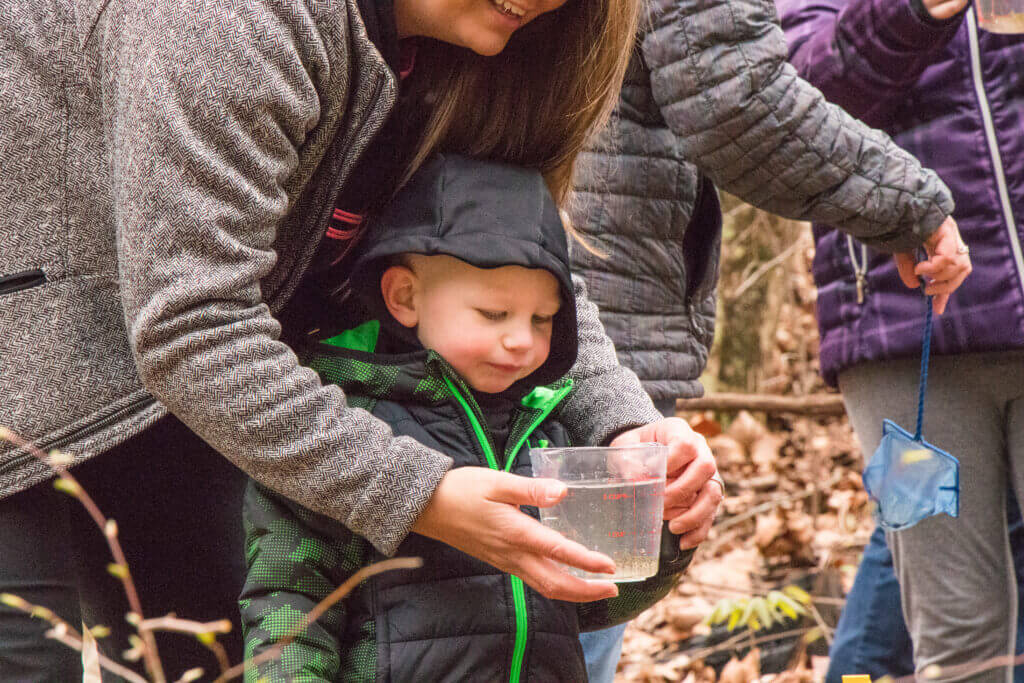
photographed by Roman Stauffer
Not Just a Classroom Pet
Trout in the Classroom came to the Kanawha Valley about 12 years ago through the Ernie Nester Chapter of Trout Unlimited. Since then, participation has grown from a couple classrooms to nearly 20 this year, with about 10 more on the waitlist.
Participating classrooms in Roane, Lincoln, Mason, and Kanawha counties—most from third grade through high school—raise brown trout, one of the more common trout species in West Virginia. To get started, classrooms must have a 55-gallon tank, a filtration system, and a chiller to keep the water cold: 55 degrees, to be exact. The setup isn’t cheap, usually totalling about $1,000 per classroom. The chiller alone can cost more than $600. Some teachers host fundraisers and recruit sponsors to pay for the program.
The West Virginia Trophy Hunters Association also provides a number of grants for the Trout in the Classroom program.
Each October, Trout Unlimited members go to the West Virginia Fish Hatchery in Edray to collect about 1,500 trout eggs. “They’re always supportive of us,” Roman Stauffer, current president of the Ernie Nester Chapter, says of the hatchery. “And we’re very appreciative of them.”
The Trout Unlimited members bring the eggs back on ice and distribute them to teachers the following day. At this point, the trout are one to two weeks away from hatching. Teachers put the eggs in a basket that hangs from the side of the aquarium. The basket is covered to keep the eggs away from light, but there’s also a cut-out panel so curious students can peer inside at the soon-to-be baby fish.
The eggs start to rise to the top of the basket over the next couple weeks, and teachers lower the basket further into the tank. Once hatched, the tiny fish—now approximately the size of a fingernail—begin eating starter food, which must be ground to the size and texture of salt.
While raising trout can be fun for students and teachers alike, it’s no easy feat. “It’s not like they set up a tank and feed the fish. It has to be monitored,” Stauffer says. “Chemicals have be measured, water has to be dechlorinated before it’s added to the tank, and 5 to 10 gallons of water at a time has to be changed. And it has to be changed more often once they eat more and produce more waste.”
While it is a big responsibility, Trout Unlimited members are happy to help the classrooms if any issues arise. Teachers call for troubleshooting tips but, if the issue cannot resolved remotely, members come to offer in-person assistance.
Some teachers have been working with the program for nearly a decade. Trout Unlimited provides sample curricula to the teachers participating in the program, but they’re welcome to make the program their own. “Teachers and students love it. They love the hands-on aspect of raising fish,” Stauffer says.
Education and Preservation
Jim Hedrick, hatchery program manager with the West Virginia Division of Natural Resources, says Trout in the Classroom is not only about education and preservation, but recreation, too. “We want to convey the importance of maintaining wild, viable populations and get them interested in fishing as well. It’s a double-win to get kids and their parents involved and interested.”
Hedrick says humans tend to protect the things we love. “If kids become passionate about fish, fishing, or raising fish, they tend to protect that for future generations.”
It takes six to eight months for fish to reach the fingerling stage—when, as you might guess, they are roughly the size of your finger. Even though the fish are still very small, they are ready to be released into local streams.
photographed by Roman Stauffer
Lampl says by this point, her students have become attached to their freshwater friends. Sometimes they name them and get a little sad when it comes time to release them into the wild. But, as Lampl explains, the fish have to go so they can continue to grow.
On release day, which at Alban Elementary always takes places during the last month of school, Lampl and her class load onto a school bus for the short trip to Kanawha State Forest. The fish sometimes accompany students on the bus, although the bumpy bus ride usually means Lampl arrives at the park sopping wet. She prefers to transport the fish in a car with a parent volunteer.
The class meets up with representatives of Trout Unlimited at the park. The children line up by a stream and, one by one, scoop fish from the bucket into plastic measuring cups. Then they submerge the cup in the stream and let the fish swim away.
“Sometimes it’s a happy time. They’re waving to the trout and telling them to have a good life and anything else they want to say, like, ‘Remember to eat bugs,’ and, ‘Stay away from bigger fish who might eat you,'” Lampl says. “And sometimes they’re upset. They don’t want to say goodbye.”
But the field trip isn’t over once the fish are released. The kids enjoy a picnic at one of the park’s shelters, sketch journal entries of the release, and make bracelets and visors to commemorate the occasion.
Lampl says her students remember the event for years to come. Some students ask their parents to revisit the stream to see if they can spot one of the newly freed fishes. She’s even had middle schoolers come back and reminisce about the trout they released as five-year-olds.
That’s exactly the kind of lasting impact Lampl hopes the Trout in the Classroom will have for her students.”It’s more than raising trout. It’s about taking care of what we have and making children feel powerful. They get to see they have the power to do something about our environment,” she says. “After they have released their fish, they have stock in our environment. They want to help make sure their fish survive.”
For more information about Trout Unlimited or the Trout in the Classroom program, visit www.enctu.org

